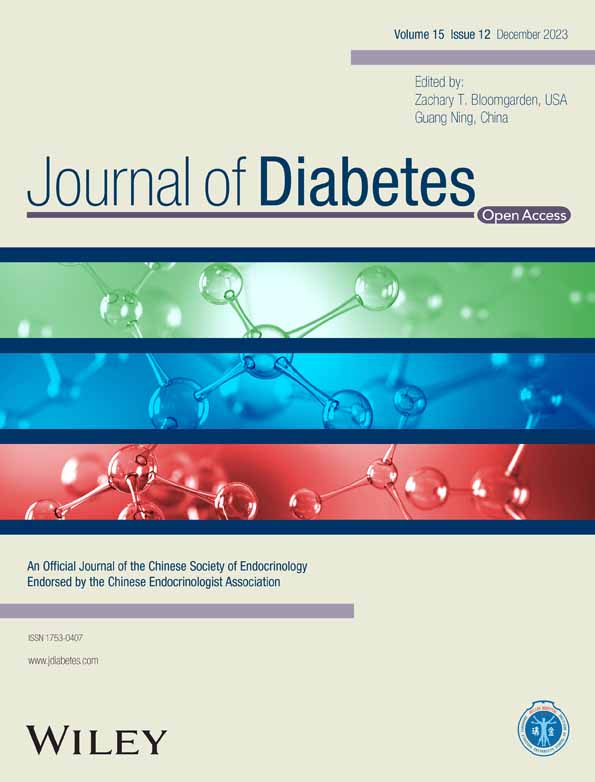Rationale and design for the Blood Pressure Control Target in Diabetes (BPROAD) study
糖尿病血压控制目标(BPROAD)研究的原理和设计
The BPROAD Executive Committee: Guang Ning (chair and lead investigator; Ruijin Hospital, Shanghai), Jiang He (vice chair and principal investigator; Tulane University, New Orleans), Weiqing Wang (vice chair and principal investigator; Ruijin Hospital, Shanghai), Yufang Bi (vice chair and principal investigator; Ruijin Hospital, Shanghai), Dalong Zhu (Nanjing Drum Tower Hospital, Nanjing), Jiguang Wang (Ruijin Hospital, Shanghai), Shengdi Chen (Ruijin Hospital, Shanghai), Yu Xu (Ruijin Hospital, Shanghai), BPROAD coordinating team at Ruijin Hospital.
The BPROAD Data and Safety Monitoring Board: Lawrence J. Appel (Chair, Johns Hopkins University, Baltimore, USA), William C. Cushman (University of Tennessee, Memphis, USA), Vivian A. Fonseca (Tulane University, New Orleans, USA), Jeff D. Williamson (Wake Forest University, Winston-Salem, USA), David M. Reboussin (Wake Forest University, Winston-Salem, USA), Yaling Han (General Hospital of Northern Theater Command, Shenyang, China), Hongbing Shen (Nanjing Medical University, Nanjing, China), Minghui Zhao (Peking University First Hospital, Beijing, China), and Hui Wang (Shanghai Jiaotong University, Shanghai, China).
Abstract
enBackground
Diabetes and hypertension are major modifiable risk factors for cardiovascular disease. Previous clinical trials have demonstrated that intensive blood pressure reduction lowers the risk of cardiovascular disease and all-cause mortality compared to standard blood pressure reduction among patients without diabetes. However, optimal levels of blood pressure control in patients with diabetes remain uncertain.
Methods
The Blood Pressure Control Target in Diabetes (BPROAD) study is a multicenter, randomized controlled trial conducted in mainland China. We plan to enroll 12 702 participants aged ≥50 years with type 2 diabetes, an increased cardiovascular risk, and systolic blood pressure ≥130 mm Hg from 150 study centers. Participants are randomly assigned to intensive (a systolic target of <120 mm Hg) or standard (a systolic target of <140 mm Hg) blood pressure treatment group. Participants will be followed monthly for blood pressure management in the first 3 months and then every 3 months afterward. The primary study outcome is a composite of major cardiovascular events including nonfatal myocardial infarction, nonfatal stroke, treated or hospitalized heart failure, and cardiovascular death. Data will be collected every 3 months for up to 5 years and a blinded outcome committee will adjudicate all clinical outcomes. The BPROAD study is designed to have 90% statistical power to detect a 20% reduction in the primary study outcome at a two-sided significance level of 0.05.
Conclusions
The BPROAD study will provide important evidence as to whether intensive blood pressure management has additional benefits on cardiovascular disease and all-cause mortality among patients with type 2 diabetes.
摘要
zh背景:糖尿病和高血压是心血管疾病两个主要可改变的风险因素。既往临床试验证明,与标准血压降低相比,强化降压可以减少心血管疾病和全因死亡风险,特别是在没有糖尿病的患者中。然而,仍然未确定糖尿病患者血压控制的最佳水平。
方法:BPROAD研究是一项在中国大陆进行的多中心随机对照试验。计划从150个研究中心招募12,702名年龄≥50岁、有心血管风险、收缩压≥130mmHg的2型糖尿病患者。参与者被随机分配到强化组(收缩压目标<120mmHg)或标准组(收缩压目标<140mmHg)。参与者在前三个月每月接受一次血压管理,之后每三个月一次。主要研究结果是一个复合主要心血管事件,包括非致命性心肌梗死、非致命性中风、治疗或住院的心力衰竭和心血管死亡。数据每三个月收集一次,最多五年,一个盲态的结果委员会对所有临床结果进行裁定。BPROAD研究旨在双侧显著性水平为0.05的情况下,具有90%的统计效力来检测主要研究结果减少20%。
结论:BPROAD研究将为2型糖尿病患者提供重要证据,以确定强化血压管理是否对心血管疾病和全因死亡有额外的好处。




